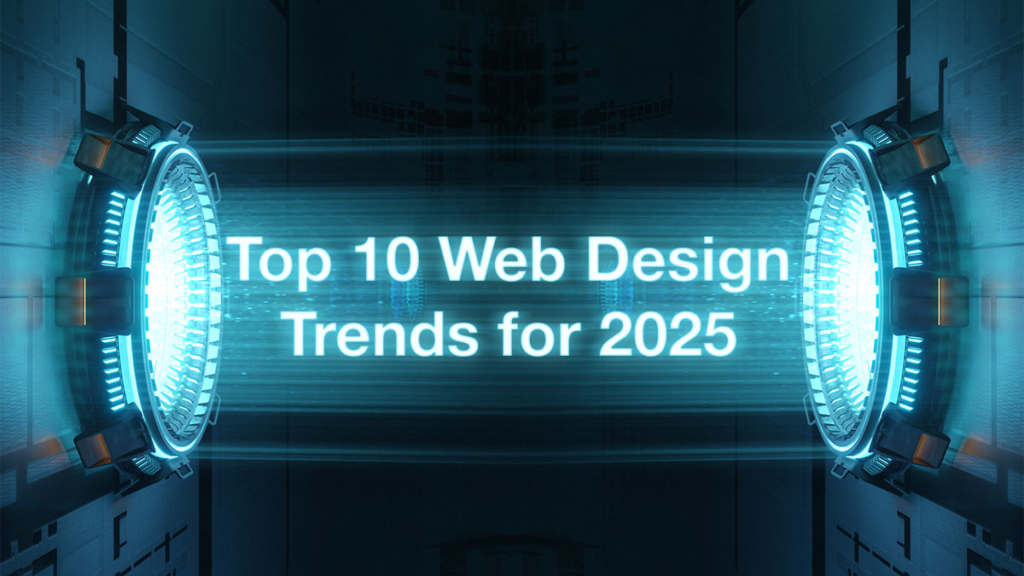
The world of web development is constantly evolving, with new technologies, tools, and best practices emerging every year. As we look ahead to 2025, the following trends are set to reshape how websites are built, designed, and experienced by users. Here are the top 10 web development trends to keep an eye on:
1. AI-Powered Web Design and Development
Artificial intelligence (AI) is making waves in the world of web development. In 2025, we’ll see more tools that use AI to help automate tasks like layout design, content creation, and even user experience optimization. AI can predict user behavior, suggesting changes that can improve conversion rates and overall engagement. Expect a rise in AI-assisted website builders and design tools, making it easier for both novice and experienced developers to create cutting-edge websites.
2. Motion UI and Interactive Design
Motion UI, which uses animations and transitions to enhance user interaction, will continue to be popular in 2025. By incorporating subtle animations, micro-interactions, and dynamic visual effects, developers can create more engaging and visually appealing websites. This trend allows for a smoother, more fluid user experience that feels intuitive and interactive, drawing users into the content.
3. Serverless Architecture
Serverless architecture, where developers don’t have to manage the servers themselves, is gaining momentum. By leveraging cloud services like AWS Lambda, developers can build and deploy websites faster, without worrying about server maintenance. This approach allows for better scalability, cost-efficiency, and easier integration of microservices, making it ideal for modern web applications.
4. Web 3.0 and Decentralized Websites
Web 3.0, the next phase of the internet, is all about decentralization, blockchain technology, and a more user-centric approach. Websites will become more secure, privacy-focused, and transparent, offering users greater control over their data. Expect decentralized applications (dApps) to grow in popularity as developers move toward a blockchain-based web, creating secure and trustless user experiences.
5. Progressive Web Apps (PWAs)
Progressive Web Apps combine the best features of websites and mobile apps. They offer a native-app-like experience on the web, including offline capabilities, push notifications, and fast loading times. As mobile web usage continues to rise, PWAs are set to become a go-to solution for developers in 2025, offering improved performance and a seamless user experience across devices.
6. Voice Search Optimization
With the continued rise of voice assistants like Siri, Alexa, and Google Assistant, voice search is becoming an essential part of web development. In 2025, optimizing websites for voice search will be crucial for driving traffic. Developers will need to ensure that websites are voice-search-friendly, using natural language, structured data, and long-tail keywords that align with how people speak.
7. Single Page Applications (SPAs)
Single Page Applications (SPAs) allow users to interact with a website without refreshing the page, offering a smoother, faster experience. Technologies like React, Angular, and Vue.js make SPAs easier to build, and as users demand faster, more responsive websites, SPAs will continue to rise in popularity in 2025.
8. Dark Mode
Dark mode isn’t just a trend—it’s here to stay. In 2025, more websites will offer dark mode as a default option, allowing users to choose a theme that’s easier on the eyes and consumes less battery life. For developers, implementing dark mode as a customizable feature can significantly improve the user experience and increase engagement.
9. API-First Development
With the growing need for flexibility and scalability, API-first development will become increasingly important in 2025. This approach focuses on building robust APIs before developing the frontend or backend. It allows for more efficient integrations with third-party tools and provides greater flexibility when building and scaling websites or applications.
10. Sustainability and Eco-Friendly Web Design
As sustainability becomes more of a global concern, developers are looking for ways to reduce the carbon footprint of websites. In 2025, there will be a greater emphasis on eco-friendly web design, with developers optimizing websites to be energy-efficient. This includes reducing file sizes, using green hosting solutions, and designing websites with fewer resources in mind to minimize environmental impact.
Conclusion
As we move into 2025, the web development landscape will continue to evolve, driven by technological advancements and the ever-changing needs of users. By staying ahead of these trends, developers can build more innovative, efficient, and user-friendly websites. Whether it’s leveraging AI, embracing decentralized technologies, or optimizing for new experiences like voice search, the future of web development is exciting and full of potential.
